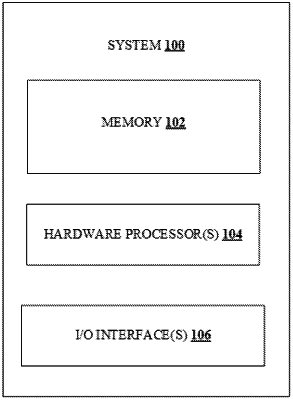| CPC G16H 50/30 (2018.01) [A61B 5/412 (2013.01); A61B 5/7267 (2013.01); G06F 18/2113 (2023.01); G06F 18/2132 (2023.01); G06F 18/2148 (2023.01); G06F 18/2193 (2023.01); G06N 20/00 (2019.01); G06V 20/698 (2022.01); G16H 40/67 (2018.01); G16H 50/70 (2018.01)] | 17 Claims |

|
1. A processor implemented method comprising the steps of:
receiving, via one or more hardware processors, test signals corresponding to one or more parameters, wherein the one or more parameters include physiological parameters, laboratory parameters and demographic parameters, and wherein the test signals are obtained periodically from a subject being monitored, wherein the subject is housed in an intensive care unit (ICU);
pre-processing, via one or more hardware processors, the received test signals by imputing missing data using at least one of Last Observation Carried Forward (LOCF), Next Observation Carried Backward (NOCB), mean imputation, and interpolation techniques, wherein the imputation of the missing data is performed subject-wise in a training phase of at least one classifier and time window-wise for the received test signals associated with the subject being monitored;
extracting, via the one or more hardware processors, a plurality of discriminating features from the received test signals, wherein the plurality of discriminating features is a combination of continuous features and categorical features extracted during the training phase of the at least one classifier, wherein the plurality of discriminating features comprises:
(i) the continuous features associated with the one or more parameters being the physiological parameters and the laboratory parameters over an empirically determined sliding time window (i hours);
(ii) the categorical features by using a binning approach on the one or more parameters being the physiological parameters and the laboratory parameters;
(iii) the categorical features corresponding to the demographic parameters; and
(iv) the categorical features corresponding to a sepsis domain;
normalizing, via the one or more hardware processors, the extracted plurality of discriminating features using stored values of standard deviation and mean associated with the one or more parameters from the training phase, wherein the normalizing is performed across sliding time windows;
ranking, via the one or more hardware processors, the normalized extracted plurality of discriminating features using a Minimum Redundancy Maximum Relevance (MRMR) method to identify a subset of the plurality of discriminating features such that the subset is representative of a sepsis condition in the subject being monitored; and
predicting, via the one or more hardware processors, a classification of the subject being monitored into one of a sepsis class and a normal class based on the identified subset using the at least one classifier trained during the training phase.
|